Sweet potatoes (Ipomoea batatas) are one of the most nutritious and versatile root vegetables you can grow at home. They are rich in beta-carotene, vitamins, fiber, and antioxidants. With the rise in urban gardening and limited-space cultivation, container gardening has become a popular method. But how much yield can you actually get from a single pot—and more importantly, how can you maximize it? This comprehensive guide explores the factors that influence sweet potato yield per pot and offers science-backed strategies to increase your harvest.
Why Grow Sweet Potatoes in Pots?
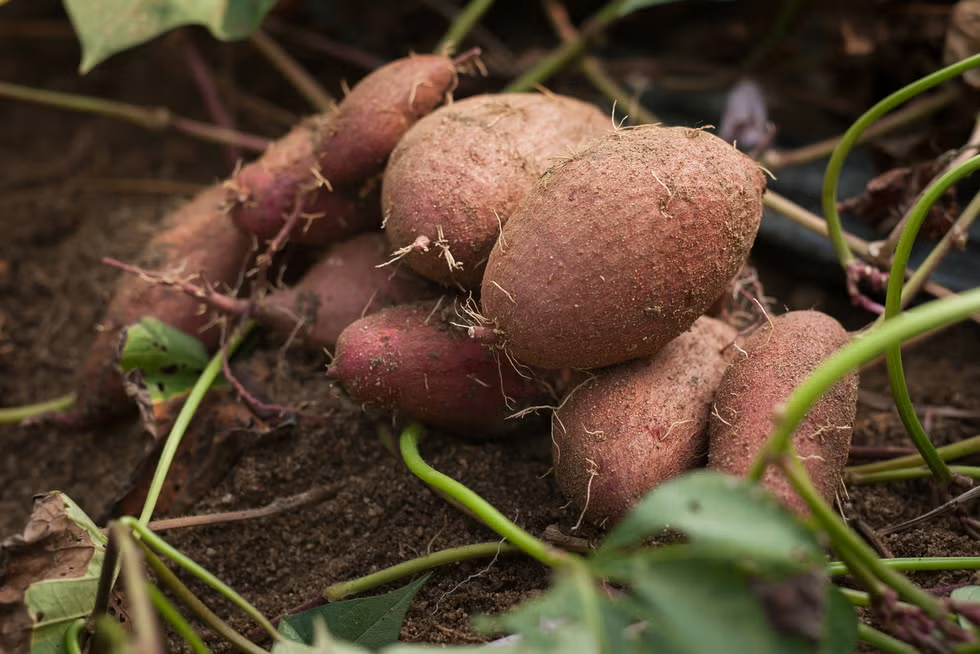
Growing sweet potatoes in containers offers many advantages:
- Space efficiency for balconies, patios, and small gardens.
- Control over soil quality and drainage.
- Mobility to place them in optimal sunlight.
- Pest and disease management becomes easier.
Despite these advantages, many gardeners fail to achieve good yields simply because they overlook key elements that contribute to root development. Let’s explore these elements in detail.
Average Yield Per Pot: What to Expect
A healthy sweet potato plant in a well-maintained container can yield 3 to 6 pounds (1.5 to 3 kg) of tubers per pot. However, this number can vary based on:
- Pot size
- Variety grown
- Soil composition
- Growing conditions
- Care and maintenance
Some expert growers even report yields of up to 10 pounds per pot, especially when using large containers and optimized techniques.
Choosing the Right Pot: Size Matters
One of the most critical factors in yield per pot is container size. Sweet potatoes need ample space to develop their large tubers.
- Minimum recommended size: 15-20 gallons (about 60-75 liters).
- Ideal depth: At least 12-18 inches (30-45 cm) deep.
- Shape preference: Wide and deep containers are best, as sweet potatoes grow laterally and downward.
Smart pots (fabric pots) are excellent for sweet potatoes as they provide good aeration, prevent root binding, and allow excess water to drain easily.
Choosing the Right Variety for Containers
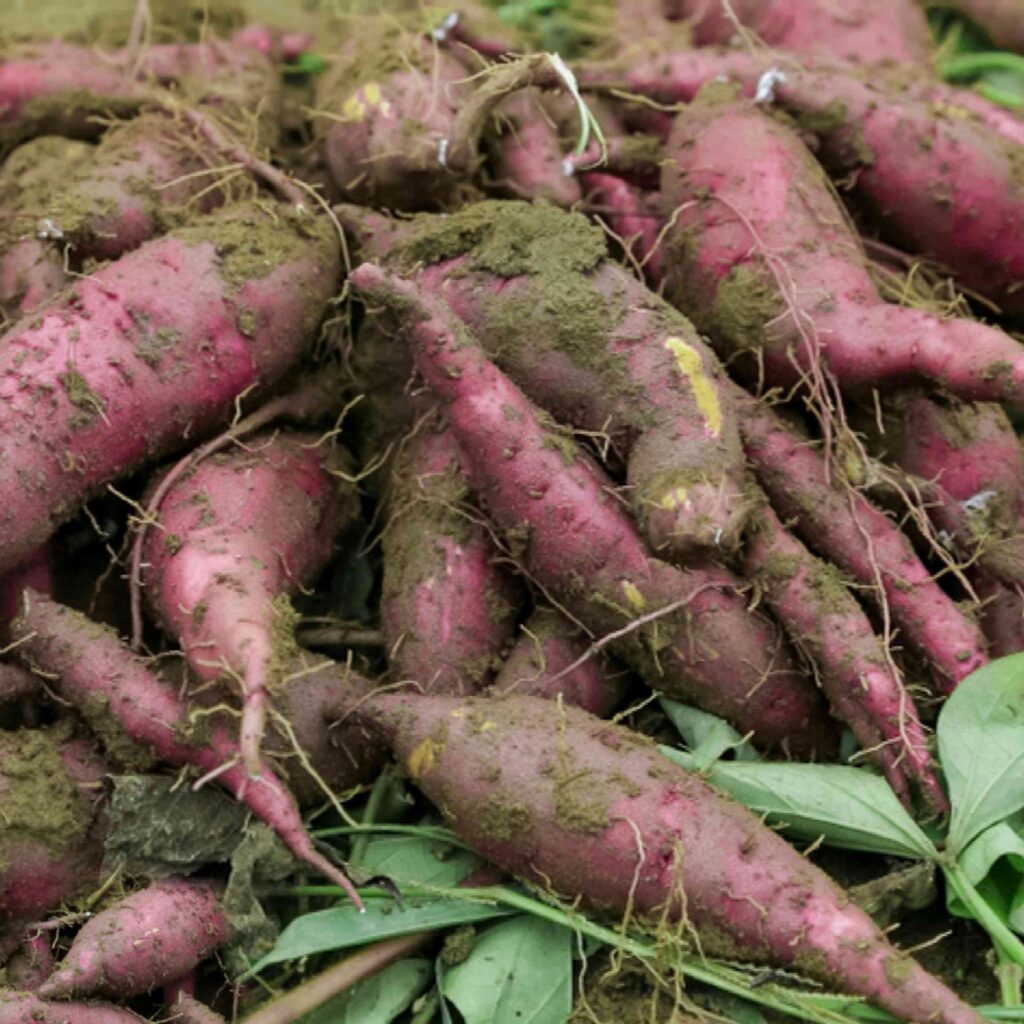
Not all sweet potato varieties are created equal. Some perform better in pots due to their compact or semi-bushy growth habit.
Recommended varieties for pots:
- Beauregard – Early maturing and high-yielding.
- Georgia Jet – Fast-growing and suited for cooler climates.
- Vardaman – Bush-type variety ideal for container gardening.
- Porto Rico – Compact growth with good flavor and yield.
Selecting a variety that suits your local climate and container limitations is essential for better productivity.
Starting Right: Slips and Planting Tips
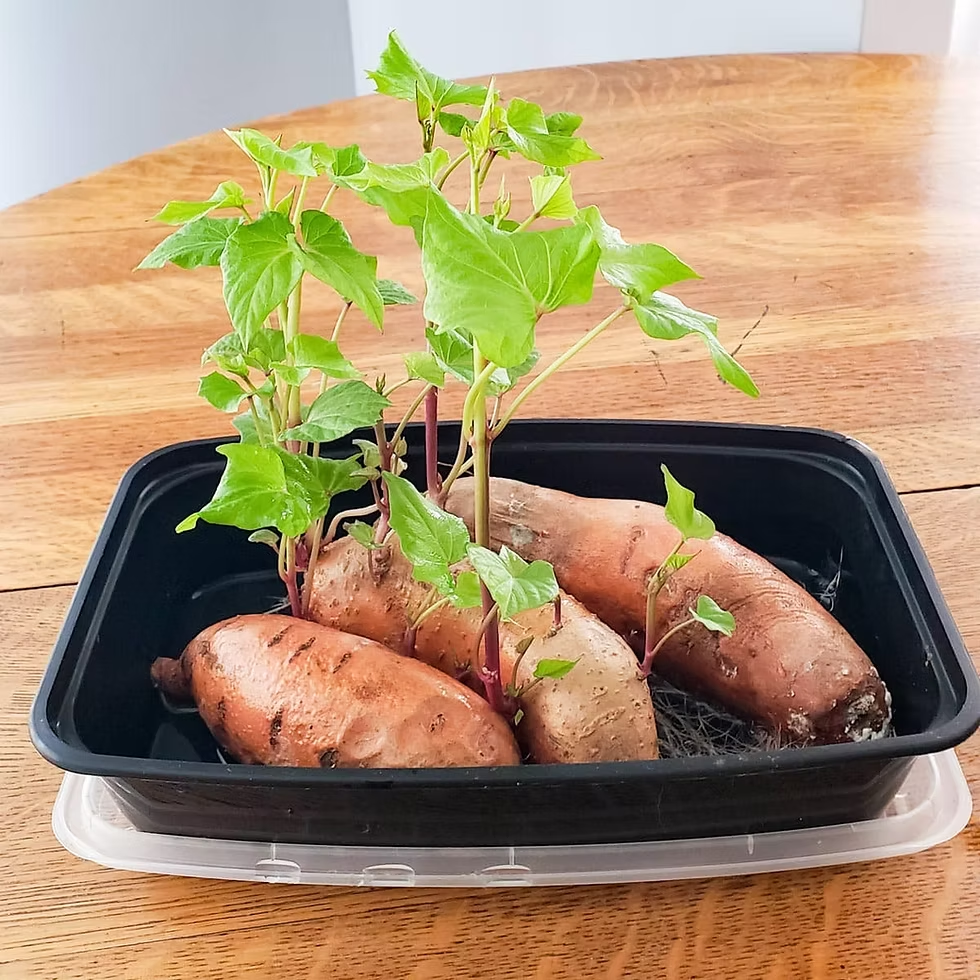
Sweet potatoes are not grown from seeds or cuttings but from slips, which are sprouts from a mature tuber.
Steps to prepare slips:
- Place a healthy sweet potato (organic preferred) in water or moist soil.
- In 2-4 weeks, slips will emerge from the tuber.
- Detach slips when they are 6-8 inches long and have a few leaves.
- Remove the bottom leaves and plant the slip about 4-5 inches deep in the container.
Tip: Avoid overcrowding. Limit to 1–2 slips per pot in 15-20 gallon containers for best yield.
Ideal Soil Mix for Maximum Yield
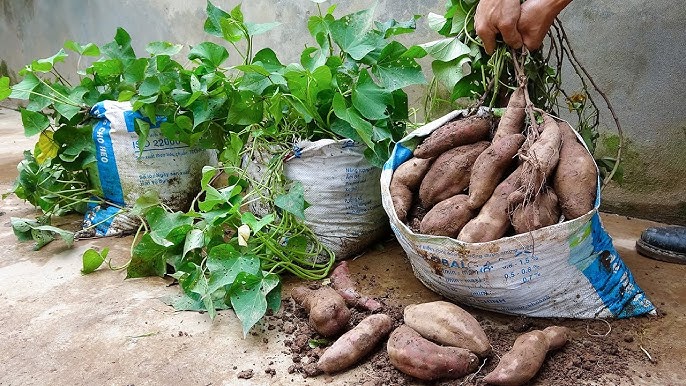
Sweet potatoes thrive in loose, well-draining, and nutrient-rich soil. Compact soil restricts root development, directly reducing yield.
Recommended soil mix:
- 50% high-quality potting mix
- 25% compost or well-rotted manure
- 15% coarse sand or perlite
- 10% coconut coir or peat moss
pH level: Slightly acidic to neutral (5.8 to 6.2).
Drainage is vital—make sure the pot has sufficient holes to avoid soggy roots.
Sunlight and Temperature Requirements
Sweet potatoes are sun-loving, tropical plants. The amount of sunlight and warmth they receive directly impacts tuber formation.
- Light: At least 6–8 hours of full sunlight daily.
- Temperature: Optimal range is 70–90°F (21–32°C).
- Frost-sensitive: Protect plants from temperatures below 50°F (10°C).
During cooler months or in northern climates, consider using greenhouses or moving pots indoors during the night.
Watering for Tuber Development

Sweet potatoes require consistent moisture, but overwatering can be disastrous.
Watering tips:
- Keep the soil evenly moist during early growth.
- Reduce watering slightly after 90 days to encourage tuber bulking.
- Avoid letting the soil dry out completely or become waterlogged.
Mulching the top of the soil with straw or dried leaves can help retain moisture and keep temperatures stable.
Fertilization Schedule
Too much nitrogen encourages leafy growth at the expense of root development. Use a balanced or low-nitrogen fertilizer.
Suggested schedule:
- At planting: Mix in organic compost or a slow-release fertilizer.
- Mid-season (6–8 weeks): Apply a potassium-rich liquid fertilizer (5-10-10 or similar).
- Avoid frequent nitrogen feedings, especially after the plant is well-established.
Organic options like bone meal and wood ash are excellent for root crops like sweet potatoes.
Supporting Vines and Growth Management
Sweet potato vines can become unruly, even in pots. Use vertical supports like trellises, stakes, or cages to train vines upward.
Why support vines?
- Increases air circulation.
- Reduces pest and fungal issues.
- Saves space and keeps the area tidy.
Trimming excess vine growth can redirect energy to tuber production. Prune lightly, and only after 60 days of growth.
Pest and Disease Control
Even in containers, sweet potatoes can be affected by pests such as:
- Sweet potato weevils
- Aphids
- Whiteflies
- Root-knot nematodes
Prevention tips:
- Use sterile, high-quality soil.
- Practice crop rotation in pots if reusing the same soil.
- Introduce beneficial insects like ladybugs.
- Use neem oil or insecticidal soap for minor infestations.
Avoid overwatering, which can lead to fungal diseases like stem rot and leaf spot.
When and How to Harvest
Sweet potatoes take 90 to 120 days to mature, depending on the variety.
Harvest indicators:
- Yellowing of leaves and vines.
- Slower new growth or vine dieback.
- Tuber formation felt near the surface (gentle probing can help).
Harvesting tips:
- Use your hands or a small fork—be gentle to avoid damaging the skins.
- Let harvested tubers cure in a warm, dry place for 7–10 days.
- Store in a cool, dark place for up to 6 months.
Curing improves both flavor and shelf life by converting starches into sugars.
Final Tips to Maximize Yield
- Rotate pot position to ensure even sunlight.
- Use large containers to give tubers room to grow.
- Don’t overcrowd – one or two slips per pot is optimal.
- Regularly prune excess vines and redirect energy to roots.
- Monitor moisture and nutrition throughout the season.
Conclusion
Growing sweet potatoes in pots is both rewarding and practical, especially for gardeners with limited space. With the right container, soil mix, care techniques, and a bit of patience, you can harvest an abundant crop right from your patio or balcony. By following the methods detailed above, it’s possible to not just grow sweet potatoes—but to maximize your yield per pot and enjoy delicious, home-grown nutrition all year round.
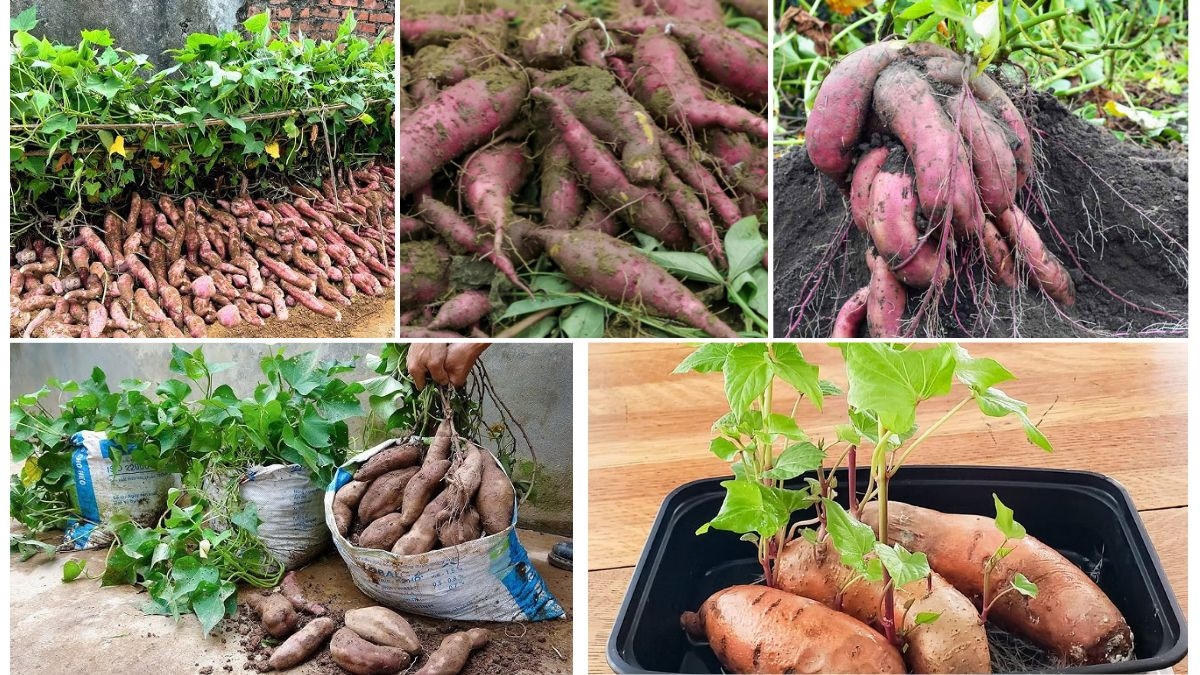





Leave A Comment